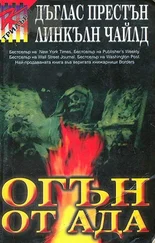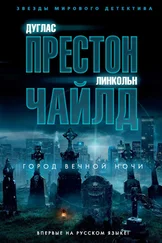“How can I help you?” he asked.
Constance nodded again, as if appreciating his directness. “The place we’re staying in — the Mortlach House.”
“I heard about that. I was glad to hear the demolition had been postponed.”
“As a tenant, I’ve taken an interest in the house’s history.”
“How so?” Perelman said cautiously.
“I’m curious about the murder. There’s quite a lot of it that seems puzzling. I was hoping you’d assist me.”
“Assist you with what?”
“Understanding what happened. Surely you participated in the investigation?”
Perelman frowned and looked away. When he did not respond, she continued.
“The body was never found, apparently, but a determination of wrongful death was made based on the sheer quantity of blood at the scene, which amounted to virtually all that would be found in a large human male. And the signs of a terrific struggle of the occupant against an intruder wielding an ax.” She reached into her bag, produced a thin sheaf of glossy photographs, and handed them to Perelman.
He flipped through them quickly, surprised and annoyed to see they were official police photographs, complete with annotations. Just looking at them brought back a flood of unpleasant memories. Where the hell did she get these? he asked himself — but then, just as quickly, he realized the answer.
“I’d think these pictures would answer any question you might have about the murder. I’m not sure what I can add. As you know, it was never solved.”
His tone had been curter than intended, and a silence fell over the boat, broken only by the cry of seagulls.
“This is an unusual boat,” Constance said, changing the subject. “Does it go fast?”
Despite himself, Perelman smiled. “It’s a cigarette boat. And yes, it goes very fast.”
“Cigarette?”
“They were originally used during Prohibition by rumrunners trying to avoid the Coast Guard. At some point they acquired the name because they were long with a narrow beam, like a cigarette, to go as fast as possible.”
“What is their purpose now, with the repeal of Prohibition?”
“Point-to-point powerboat racing is very popular today. The go-fast design proved ideal.” He made a vague sweeping gesture with the back of one hand. “I bought this thirty-two-foot frame a couple of years after becoming chief. It’s a relic, built in the late sixties, but it had new crate inboards that caught my attention.”
“Crate inboards?”
“Engines, already fitted out with manifolds, heads, other car parts.”
“Car parts? You mean this boat is powered by automobile engines?”
“Sure. They’re often salvaged from car wrecks and repurposed for boats.” He patted the rear hatch. “This baby has twin Corvette 454s, old big-block Chevys tweaked for additional horsepower.”
“I would think boats and cars incompatible.”
“The conversion isn’t difficult. It’s actually easier to drive them in a boat than on four wheels. No gears.” He laughed. “Just turn the key, push the throttle forward, and hang on, you know.”
“Actually, I don’t know, but thank you for a fascinating explanation.”
“You’ve never driven a boat?”
“I’ve never driven any sort of motorized vehicle.”
“I—” Perelman stopped himself. This was a surprise. But it also helped highlight the fact that the interest she was showing was mere courtesy.
“Of course,” he went on, changing tacks, “this particular boat spends far more time tied up at a slip than it does out in the gulf. Took me two years to finish repainting it, and I still haven’t thought of a name.” He turned to Constance. “Any suggestions?”
“‘Up the River’?”
He laughed. “Look, I’m sorry if I seemed a little touchy back there about the homicide. It’s a sore point. When I first got here, the murder was only two months old. I was on fire to prove myself and took up the investigation with a vengeance. But we never got anywhere.”
“Why?”
“Well, the killer must have entered and exited the house, but we could find no evidence of ingress or egress, no evidence of a boat landing or car arriving and leaving, no witnesses who saw anyone coming and going, not a clue as to who it might have been.”
“And no body?”
“We figure he tossed it in the ocean nearby, since it would have been hard to transport it off the island without being seen, but nothing ever washed up. It was plain as day it was a homicide. Not just the amount of blood belonging to the victim, but chop marks in the wood with scalp and hair embedded, the blood spatter analysis, the cast-off spatter from a handheld weapon — not to mention the volume of blood at the scene. The blood type was the owner’s, of course.”
“How much blood?”
“About five liters. That’s pretty much all the blood in a human body. Even losing half that amount would have put the victim into class IV hemorrhagic shock — inevitably fatal.”
“Tell me about the victim.”
“His name was Wilkinson. Randall Wilkinson. Late fifties, unmarried. Worked as a chemical engineer, an expert on lubricants and solvents at an automotive subcontracting company in Fort Myers. Sounds about as interesting as watching paint dry.”
“Literally,” Constance said faintly.
“Yeah. Anyway, he helped invent some new process. On the strength of that, he moved to Captiva and bought the Mortlach House. Then a couple of years later he was involved in some kind of chemical accident. Damaged his lungs, I think. After that, he only worked part-time. This was, oh, maybe 2004, 2005. The man always lived quietly. Polite, reclusive. Walked the beach every evening at sunset, rainy or clear. And then, one July night in 2009...” Perelman spread his hands.
“Unmarried, you said.”
“That’s right.”
“Do you know if he had an insurance policy on his life?”
“He had a term policy, yes. Quite sizable, but nothing totally outrageous. His sister was the beneficiary. Naturally the insurance company balked but paid up in the end.”
“Does she live nearby?”
“No. Massachusetts, I think.” He looked at her. “You don’t think she killed her own brother, do you? Not even the insurance company suspected that — and they suspect everything. Anyway, as best I can remember, she lived a quiet life. Never moved into the house. Died not all that long after inheriting it.”
Constance smoothed her dress again. “Did he have any enemies?”
“None that we know of. Everybody imaginable was interviewed: the chemists he worked with, relatives, his roommate at UF’s grad school, elementary school friends. He led a very dull, law-abiding, quiet life.”
Constance nodded. “It would appear, from the photographs, that the killer dragged the body to the door.”
“Right. That was really confounding. The blood smear led straight to the door and over the threshold, where it abruptly ended. We hypothesized the killer loaded the body directly into a vehicle on that spot. But damned if we could find any good tracks or witnesses who saw a car.”
“I see.”
Constance gazed at him with a strangely penetrating look. For a moment, Perelman felt a totally unreasonable wish that, in some capacity or other, Constance were a member of his team.
“I know, Chief Perelman, that unsolved murder cases are never closed — they just go cold. In your time here, you must have heard innumerable speculations about this one. Have you, personally, found any theory to be more persuasive than the others?”
He hesitated. “The more you think about it, the less sense it makes. I’ve seen my share of unsolved homicides. You do everything you can and then you simply have to lay it aside. Not very satisfying, I’m afraid, but that’s it.” He rose from the deck cushion. “I’m going to get a beer. Can I get you something? If not beer, I’ve got a bottle of Beaujolais nouveau chilling in the cabin.”
Читать дальше
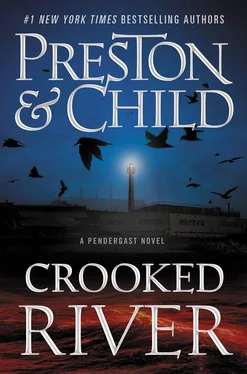
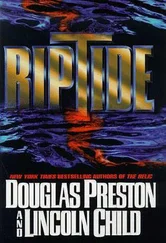
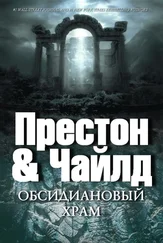
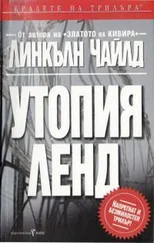
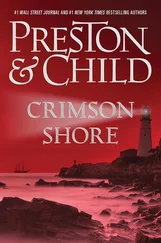
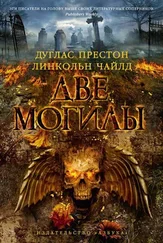
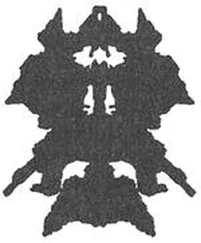
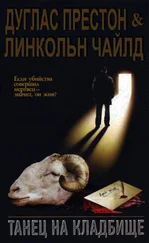

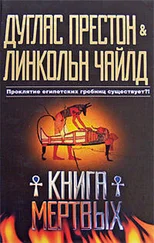
![Линкольн Чайлд - Стихи для мертвецов [litres]](/books/396536/linkoln-chajld-stihi-dlya-mertvecov-litres-thumb.webp)
